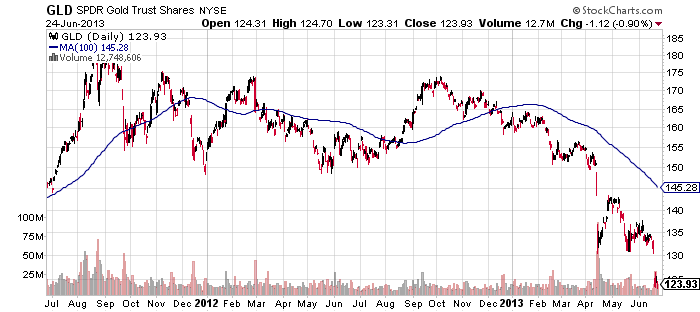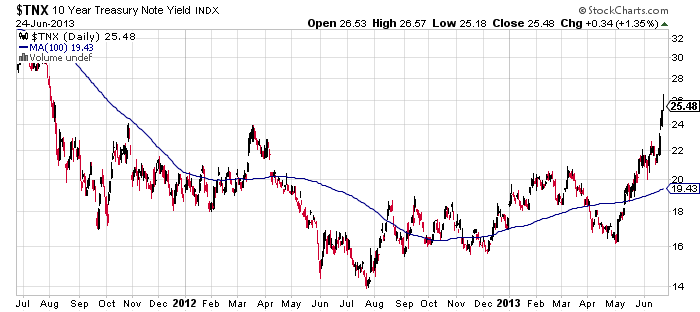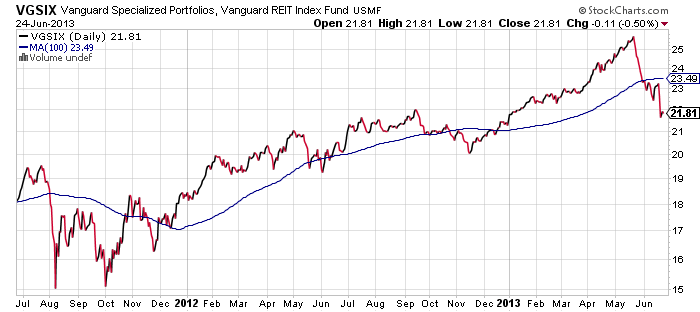Sgt. Dillard Johnson's new memoir claims he killed 2,746?insurgents in Iraq. Some who served with him express doubts.
By Dan Murphy,?Staff writer / June 26, 2013
One thing that's certain is that it was a tough fight.
John Moore/AP
Enlarge
A new war memoir, "Carnivore" by Dillard Johnson, makes some rather extraordinary claims, according to media appearances and promotional material from publisher HarperCollins. But it's looking likely that these claims are exaggerated, and in some eyes are veering towards stolen valor territory.
Skip to next paragraph
Dan Murphy Staff writer
Dan Murphy is a staff writer for the Monitor's international desk, focused on the Middle East.?Murphy, who has reported from Iraq, Afghanistan, Egypt, and more than a dozen other countries, writes and edits Backchannels. The focus? War and international relations, leaning toward things Middle East.
Recent posts
' +
google_ads[0].line2 + '
' +
google_ads[0].line3 + '
'; } else if (google_ads.length > 1) { ad_unit += ''; } } document.getElementById("ad_unit").innerHTML += ad_unit; google_adnum += google_ads.length; return; } var google_adnum = 0; google_ad_client = "pub-6743622525202572"; google_ad_output = 'js'; google_max_num_ads = '1'; google_feedback = "on"; google_ad_type = "text"; // google_adtest = "on"; google_image_size = '230x105'; google_skip = '0'; // -->
Subscribe Today to the Monitor
Click Here for your FREE 30 DAYS of
The Christian Science Monitor
Weekly Digital Edition
The book is subtitled "A memoir by one of the Deadliest American Soldiers of All Time" and in it Sgt. 1st Class Johnson and his co-author write that he had 2,746 "confirmed" enemy kills during his time serving in Iraq, with 121 of those "confirmed sniper kills, the most ever publicly reported by a US Army soldier."
But his claims have sent the online veteran community into an uproar, with many vets calling them implausible and some men who served with him saying his statements are downright falsehoods. He served as a commander of a Bradley Fighting Vehicle with the 3rd Squadron, 7th US Cavalry, which took the lead in the charge to Baghdad after US forces went over the berm to invade Iraq in March 2003.
"I don?t want to take away from what [Johnson] did do, he did do great things: led a platoon, completed the missions," Brad Spaid tells the Monitor. He is a former staff sergeant who served with Johnson in Iraq and now has a civilian job with the Veteran's Administration and has read the book. "We lost some really good NCOs, guys that we really looked up to, and we feel that ? on Facebook and blogs other vets are coming out and calling us out and calling us liars and idiots, and it takes away from what we really did?. We don?t want to become a laughing stock, we want to be remembered for what we did and move on."?
That Sergeant?Johnson (who received a Silver Star) and his fellows in the 7th Cavalry faced heavy fighting and performed admirably in Iraq is beyond question. The brief unit history on their website recounts that "combat operations for Operation Iraqi Freedom began on March 20th when the squadron crossed into Iraq as the lead element of the [3rd Infantry Division]. The Squadron attacked to Baghdad fighting both the Republican Guard and the Saddam Fedayeen. It was the longest cavalry charge in the history of the world and it ended in the capture of Baghdad."
But while I haven't yet read the book, the headline claim is an extraordinary one, based on my five years covering the Iraq war between 2003 and 2008. An ounce of common sense also comes into play.?
In late 2007, after Johnson had left Iraq, statistics provided to USA Today by the US-led coalition, estimated that 19,429 militants had been killed by all coalition forces, including Iraqi ones, since the start of the war in 2003. Johnson's claimed "confirmed kills" of 2,746 would amount to 14 percent of all those deaths, an astonishing number for a single soldier who did not serve in the hottest battles of the post-invasion war.
His statement is even more remarkable when compared to the brief history given at the unit's home page, which recounts that "by the time the Squadron had redeployed it had killed 2,200 Iraqi personnel, 64 tanks, 41 armored vehicles, numerous active air defense systems, as well as trucks and civilian vehicles used as suicide bombers."
The squadron experienced heavy fighting between the invasion of Iraq on March 20, 2003 and when it left in August. It returned to Iraq for 12 months in 2005. Former Staff Sgt. Brad Spaid, who was with the 3/7th's Apache Troop in Iraq in '03 and with the Crazy Horse Troop that Johnson belonged to in '05, estimates that they only had about six engagements during that second deployment with at most five to six insurgents killed in each one. Yet Johnson's confirmed kills claim is 124 percent of the total on the unit's history page for 2003 and, by Mr. Spaid's reckoning, would still be well above 100 percent of the total if he claimed every single kill made in 2005.?
To be sure, the real number of militants killed by US forces in Iraq is essentially unknown, any statistics a combination of guesswork made amid the haze of battle when units were running on to the next engagement, not spending time counting up dead bodies and figuring out who delivered the shot that struck them down. A press contact for HarperCollins' William Morrow imprint, which published "Carnivore," had not returned a call for comment at the time of publication.
Whatever the uncertainty around body counts, the claims invite incredulity, and will raise doubts about any other claims made in the book, which is currently being heavily promoted by the NewsCorp media empire. NewsCorp owns HarperCollins and the tone of NewsCorp's news properties about the book has been gushing and uncritical. For instance the company's New York Post carried an "exclusive" on June 23 that begins:
With 2,746 confirmed kills, Sgt. 1st Class Dillard Johnson is the deadliest American soldier on record ??and maybe the most humble.
As a commander of a Bradley Fighting Vehicle nicknamed ?Carnivore,? Johnson, 48, helped lead the ground assault during Operation Iraqi Freedom, overwhelming the enemy with a relentless show of military might that left a trail of dead in his wake.
Johnson was obliged to report confirmed kills to his superiors, cataloging the dead in a green journal that revealed the astonishing tally ? which only began to come light as he and co-writer James Tarr were researching his exploits for his memoir.
And here's a partial transcript of his appearance on Fox and Friends yesterday morning (titled: "True stories from one of America's deadliest soldiers") with the interviewer in full "hooah!" mode (the transcript is mine; I've summarized the interviewer's comments):
Interviewer: "Hear this incredible story, and meet this incredible man. With 2,746 confirmed kills Army Sgt. 1st Class Dillard CJ Johnson is one of the deadliest American soldiers on record..."
Johnson: "I've just always been lucky I guess, you know, it's better to be lucky than good. I grew up and I always wanted to be Sgt. Rock, Sgt. Fury from the comic books and I believe in America and what it stands for."
Interviewer: You've got 100 plus sniper kills, why did you write this book?
Johnson: I wrote this book "because I kept winding up in other books and magazines and stuff over an insert from 'On Point.'?It was out there in public domain, and all these other writers kept using it. And Charlie Horse really deserves, Crazy Horse, the unit I was in, really deserves the credit for what went on over there as far as the battle and the confirmed kills.?And the confirmed kills aren't as if I went out there and actually counted bodies to go through this ??a lot of them are attributed from the book 'On Point' and the other ones are when I actually did battlefield assessment to give my commander an evaluation of what was going on out there. But there were other troopers that did as much as I did or even more out there with it."
Interviewer: What should people understand about our fighting men and women?
Johnson: "They should really know that there's nobody out there doing this for a paycheck. They're doing it for love of country and love of their fellow soldier and they're putting their entire life on hold and their life at risk every day so that people can enjoy the freedoms that they have.... I don't think people really understand, you know, when we go to war with someone else, they don't understand what that country was like and everything else. America has been very fortunate as far as how our civilians act and everything else and we don't have the same culture that these other countries do, and all we can really do when we go to these other countries [is] give them a fighting chance, you know, for democracy..."
Dennis Goulet, who was the leader of the troop's 4th platoon (Johnson was the 3rd platoon's sergeant), writes that he doesn't believe Johnson's sniper claims, particularly an account of killing two insurgents at a range of 852 meters. "I can tell you ... the man was no sniper," he writes in an e-mail. "The only weapon system he had that could reach that far would be the Barrett or the Bradley gun. I was either with him on every mission and if I wasn't with him, every enemy engagement would have to be reported to the Tactical Operations Center (TOC) and it's not like he was out there by himself."
A Dec. 14, 2005 release put out by a public affairs officer for the 2nd Brigade Combat Team appears to say that Johnson killed two Iraqi insurgents at 852 meters in an engagement at Salman Pak, just south of Baghdad. (I write "appears" only because I can only find the release on unofficial sites like this one, not on official military sites, but it looks legitimate). But neither Mr. Goulet nor Spaid has any recollection of this achievement.
Goulet says the .50 caliber Barrett sniper rifle the unit carried was "seldom used" and doesn't recall Johnson killing anyone with it. I'm "not trying to discredit the man's service to the country, but there are hundreds of others that deserve recognition for their service, to include five men who lost their lives in 2005. It's about all who served in 3-7, NOT Johnson," writes Goulet.
Spaid says there are other elements in the book that ring false to him. In the book, Johnson recounts firing 7,000 rounds of depleted uranium ammunition from his Bradley Fighting Vehicle (nicknamed "Carnivore" and so yielding the title of the book) and dismounting to fight hand-to-hand. Spaid says at the time the heavy armor unit was not trained for that kind of infantry fighting and doubts that happened, recalling that he was only issued a 9mm pistol "with about 27 rounds" at the time. "We never dismounted, we were heavy armor."
Spaid says he checked with the Master Sergeant responsible for tracking ammunition used during that deployment ??an important job since guns require maintenance after firing a certain number of those rounds and could explode, injuring or killing their crew, if they didn't get it. He says the sergeant told him "for Johnson to go through 7,000 depleted uranium rounds, that would have been 1/3 of what we?d been given for the entire invasion to be split between 50 or 60 Bradleys." He also points out that a Bradley carrying that many rounds would be physically impossible.
Other stories he casts doubt on include Johnson's claim that he cut through a 220 volt cable with a small knife to darken an Iraqi hut he was hiding in when insurgents entered. "That area where he was ??there wasn't electricity," says Spaid. "And I've been to college, I think that many volts would melt a knife that size, even if it was insulated, not just leave a few nicks."
The tales of the 7th Cavalry in Iraq are filled with heroism, tragedy, and obstacles overcome, and I hope to revisit some of those stories later this week so that it isn't all about Johnson.
But as the saying goes, the first casualty when war comes is truth. Sometimes the casualties continue to accrue long after the guns have fallen silent.
Source: http://rss.csmonitor.com/~r/feeds/csm/~3/gQWX_90OwL0/America-s-deadliest-soldier-or-stolen-valor
linkedin Frank Lautenberg Pia Zadora chicago blackhawks Alexandra Lenas Jim Kelly Secret Life of the American Teenager













